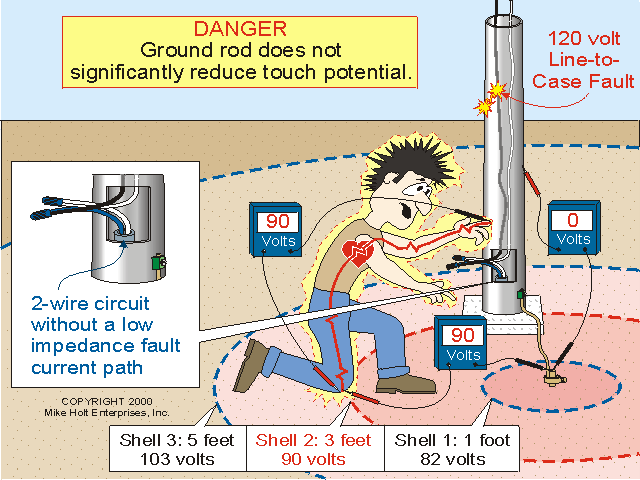Yes, I saw a diagram with equalpotential 'shells' surrounding each rod. The shell radius was perhaps equal to the ground rod depth.
The term shells are just a reference to a point of distance from a rod or other type of electrode in Earth, it is a function of the measured resistance of Earth in the form of R per CM of soil, it is not just in two dimensions but three as this shell follows the rod to its depth and under it keeping the same distance, the shell is just a term used to understand how the resistance of soil works, it is not an area of equalpotential as the resistance will still vary when measured closer or farther from the rod, to the point of max "sphere of influence" 26 feet in most common soil.
The 3' reference is the most common used as it is a point that a person who could be in contact with a live rod (120 volts) or light standard that is only grounded by a rod, and if kneeling will have 75% of voltage or 90 volts between his knee and the electrified light pole pole.
The true term is the "sphere of influence" which is a point from the rod out to a distance of about 26 feet, beyond this point the rod no longer has very little to any influence on the Earth this depends upon the resistivity of the soil r per cm, the lower the resistance of the soil the smaller the SOI, it also affect the 75% voltage drop stated above and now instead of a 3 foot shell it can be a 2'6" shell that will have a 75% voltage drop.
As stated the best separation of ground rods is 2 times the length of the rod, but the NEC minimum is 6 feet once you get beyond the SOI of the rod it makes no difference in the measured resistance as the reading will stay the same.
Here is an old thread where a member did some point measurements to understand how an electrode connection to Earth works:
"Earth Shells Experiment = time to eat crow!"
It will help you understand how little a ground rod contributes to safety of an electrical system, but it is hard to convince old school electricians, and utility workers and engineers as they play with much higher voltages and it seems to function for them.
And with the above said, this thread is another example of a utility requirement by someone who does not have the knowledge of how Earth electrodes even work and what they can or cannot do.
Here is also a graphic from MH that also give a little visual aid to what I was talking about:


